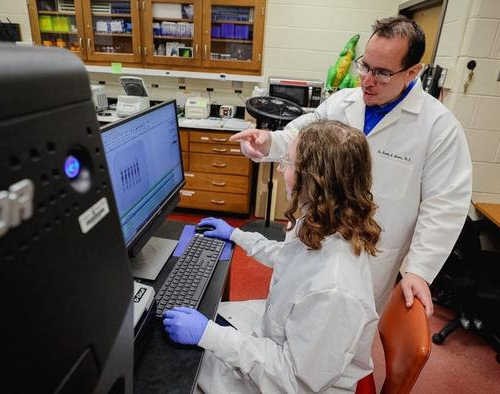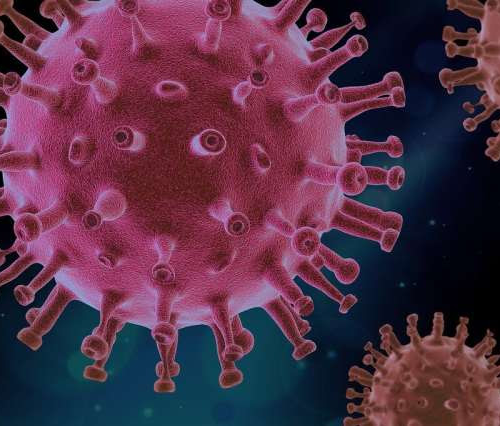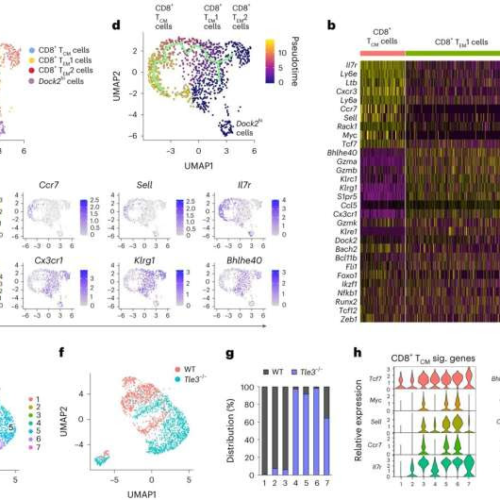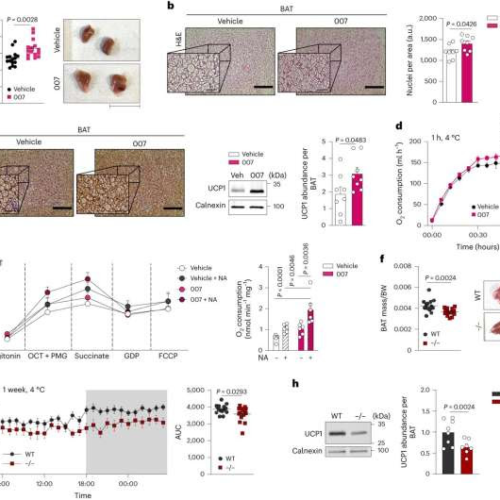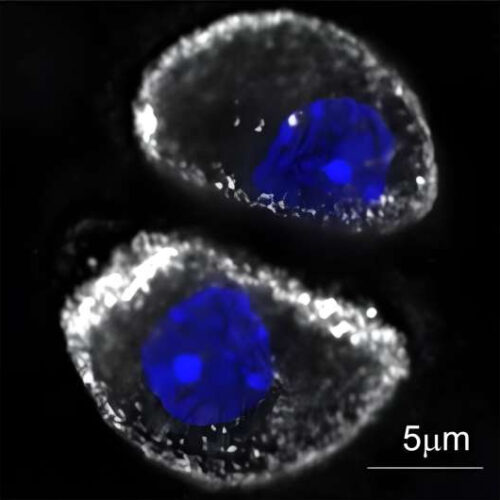The finding, published in the Journal of Neuroscience, could have implications for improving memory and relieving traumatic memories.Peer-Reviewed Publication VIRGINIA TECH (FROM LEFT) RESEARCH SCIENTIST KAYLA FARRELL AND ASSOCIATE PROFESSOR TIM JAROME IN THE SCHOOL OF ANIMAL SCIENCES ARE PART OF A VIRGINIA TECH RESEARCH TEAM THAT DISCOVERED A NEW FUNCTION FOR A COMMON PROTEIN...
Tag: <span>Protein</span>
Study: This protein may be the ‘glue’ that helps COVID virus stick
by Tulane University Credit: CC0 Public DomainWhen SARS-CoV-2 enters the human body, the virus’ spike protein binds to a cell, allowing the virus to infiltrate and begin replicating. A new study from Tulane University, conducted in partnership with Florida International University and published in Protein Science, has identified a protein that may be the glue that...
Research uncovers Tle3 protein’s role in enhancing memory T cells
by Hackensack Meridian Health Deletion of Tle3 promotes the formation of TCM cells as manifested at the single-cell level. Credit: Nature Immunology (2024). DOI: 10.1038/s41590-023-01720-wThe Xue Lab at the Hackensack Meridian Center for Discovery and Innovation (CDI) has made another breakthrough in better understanding and potentially modulating the immune system to fight diseases. The insights...
Researchers identify protein that increases the formation of good brown fat
by Inka Väth, University Hospital Bonn EPAC1 signaling promotes BAT growth and function in vivo. Credit: Nature Cell Biology (2024). DOI: 10.1038/s41556-023-01311-9Brown fat cells convert energy into heat—a key to eliminating unwanted fat deposits. In addition, they also protect against cardiovascular diseases. Researchers from the University Hospital Bonn (UKB) and the Transdisciplinary Research Area “Life &...
Targeting the mRNA of ‘undruggable’ proteins in the fight against Parkinson’s disease
by Justin Jackson , Medical Xpress Pixabay/CC0 Public DomainResearchers at the Scripps Research Institute, Florida, have developed a new method to counteract α-synuclein protein levels by targeting the mRNA that forms them. The strategy unlocks many research doors with potential therapeutic approaches for addressing neurodegenerative diseases. In a paper, “Decreasing the intrinsically disordered protein α-synuclein...
A protein identified as key player in keeping cells tidy
Osaka UniversityJust as healthy organs are vital to our well-being, healthy organelles are vital to the proper functioning of the cell. These subcellular structures carry out specific jobs within the cell, for example, mitochondria power the cell and lysosomes keep the cell tidy. Although damage to these two organelles has been linked to aging, cellular...
Neuroscientists engineer a protein that enhances memory to respond to anti-aging drug
by Catholic University of the Sacred Heart Credit: Pixabay/CC0 Public Domain Neuroscientists at the Faculty of Medicine and Surgery of the Catholic University, Rome, and the Fondazione Policlinico Universitario Agostino Gemelli IRCCS have genetically modified a molecule, the protein LIMK1, which is normally active in the brain, with a key role in memory. They added a...
The dual role of well-known protein sheds light on Parkinson’s disease mechanisms
by Lisbeth Heilesen, Aarhus University New research from Aarhus University with international collaborations has revealed that natural aSN activates an important calcium pump in the cell membrane. Credit: Antoni Kowalski The protein alpha-synuclein (aSN) has long been known as a main cause in Parkinson’s disease and Lewy Body Dementia, for example, when it forms lumpy protein...
Research identifies protein that protects healthy joints from osteoarthritis
by University of Delaware The blue area is the cell nucleus, the white area is F-actin, the structural scaffolding of the cells. Researchers discovered adseverin regulates the amount of F-actin in the cells. In osteoarthritis loss of F-actin can eventually lead to cell death. Credit: University of Delaware A previously unstudied protein in the framework of...
Researchers identify protein that may help protect against osteoporosis
WILEY New research published in The FASEB Journal indicates that increasing the expression of a particular gene may help to prevent bone loss associated with postmenopausal osteoporosis. For the study, investigators examined which genes are involved in turning precursor cells called bone marrow–derived mesenchymal stem cells (BMSCs) into cells that play a crucial role in bone formation. The screen...

